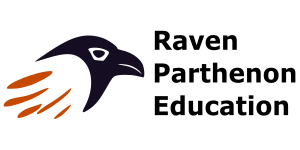Singapore Junior Biology Olympiad (SJBO)
The Singapore Junior Biology Olympiad (SJBO) is an annual Biology competition catered to Secondary 1 to Secondary 4 students, and provides a platform for upper secondary students to challenge themselves further in the area of biology. SJBO will focus on critical thinking skills as applied to biology, and it is hoped that students develop a holistic culture and passion in learning and applying biology in their lives.
Our SJBO Course Syllabus was developed by our Biology specialists who are ex-contestants and have unique experience and knowledge to pass on to aspiring juniors taking part in these competitions. Some of our students have gone on to win Gold/Silver Medals at the SJBO.
| Lesson | Topic | Content |
|---|---|---|
| 1.01 | Cell Biology | Biomolecules I: Organic Chemistry, Carbohydrates and Lipids |
| 1.02 | Biomolecules II: Proteins, Nucleic Acids and Micronutrients | |
| 1.03 | Organelles and its Functions | |
| 1.04 | Membrane Structure and Function | |
| 1.05 | Metabolism and Enzymes | |
| 1.06 | Cellular Respiration and Fermentation I | |
| 1.07 | Cellular Respiration and Fermentation II | |
| 1.08 | Photosynthesis | |
| 1.09 | Cell Communication | |
| 1.10 | Necrosis and Apoptosis | |
| 1.11 | Cell Cycle and Mitosis | |
| 2.01 | Plant Anatomy and Physiology | Vascular Plant Structure, Growth and Development |
| 2.02 | Transport in Vascular Plants | |
| 2.03 | Angiosperm Reproduction | |
| 2.04 | Plant Responses to Internal and External Signals | |
| 3.01 | Animal Anatomy and Physiology | Basic Principles of Animal Anatomy and Physiology |
| 3.02 | Animal Nutrition I: Mouth, Oesophagus and the Stomach | |
| 3.03 | Animal Nutrition II: Small Intestine and the Large Intestine | |
| 3.04 | Circulatory System | |
| 3.05 | Respiratory System | |
| 3.06 | Immune System: Innate and Adaptive Immune Systems | |
| 3.07 | Osmoregulation and Excretion | |
| 3.08 | Hormones and Endocrine System | |
| 3.09 | Animal Reproduction: Reproductive Organs and Sex Hormones | |
| 3.10 | Animal Development: Cleavage, Morphogenesis and Cytoplasmic Determinants | |
| 3.11 | Nervous System I: Neurons and Action Potential | |
| 3.12 | Nervous System II: Brain Structure and Function, Memory and Nervous Disorders | |
| 3.13 | Hearing, Seeing, Tasting and Smelling | |
| 3.14 | Muscles and the Skeleton | |
| 4.01 | Ethology | Animal Behaviour |
| 5.01 | Genetics | Meiosis and Sexual Cycles |
| 5.02 | Mendelian Genetics I: Inheritance Patterns for 1 and 2 Genes | |
| 5.03 | Mendelian Genetics II: Dominant and Recessive Traits, Multifactorial Diseases and Sex-Linked Genes | |
| 5.04 | Chromosomal Basis of Inheritance: Linked Genes, Genetic Disorders and Genomic Imprinting | |
| 5.05 | Molecular Basis of Inheritance: DNA Structure and DNA Replication | |
| 5.06 | Gene Expression, Transcription and Translation | |
| 5.07 | Regulation of Gene Expression | |
| 5.08 | Viruses | |
| 5.09 | Biotechnology and its Applications | |
| 6.01 | Evolution | Evolution of Populations: Natural Selection, Hardy-Weinberg Equilibrium, Adaptive Evolution |
| 6.02 | Speciation: Reproductive Isolation, Geographical Barriers and Hybridization | |
| 6.03 | Phylogeny | |
| 7.01 | Ecology | Introduction to Ecology and Geology |
| 7.02 | Population Ecology: Promise and Problems of Population Growth | |
| 7.03 | Community Ecology: Interactions, Disturbances and Biogeographic Factors | |
| 7.04 | Ecosystems, Restoration Ecology and Conservation Biology | |
| 8.01 | Biosystematics | Bacteria, Archaea and Protists |
| 8.02 | Plant Diversity I: Bryophytes | |
| 8.03 | Plant Diversity II: Ferns | |
| 8.04 | Plant Diversity III: Gymnosperms | |
| 8.05 | Plant Diversity IV: Angiosperms | |
| 8.06 | Animal Diversity I: Body Plans and the Phylum Porifera | |
| 8.07 | Animal Diversity II: Phylum Cnidaria and Phylum Platyhelminthes I | |
| 8.08 | Animal Diversity III: Phylum Platyhelminthes II and Phylum Nematoda | |
| 8.09 | Animal Diversity IV: Phylum Mollusca | |
| 8.10 | Animal Diversity V: Phylum Annelida | |
| 8.11 | Animal Diversity VI: Phylum Echinodermata | |
| 8.12 | Animal Diversity VII: Phylum Arthropoda | |
| 9.01 | Biostatistics | Tackling Complex Graph-Based Questions in the Biology Olympiads |
Contact us now so that we can evaluate your child and customise a curriculum based on his/her abilities.

 Raven Parthenon Education
Raven Parthenon Education